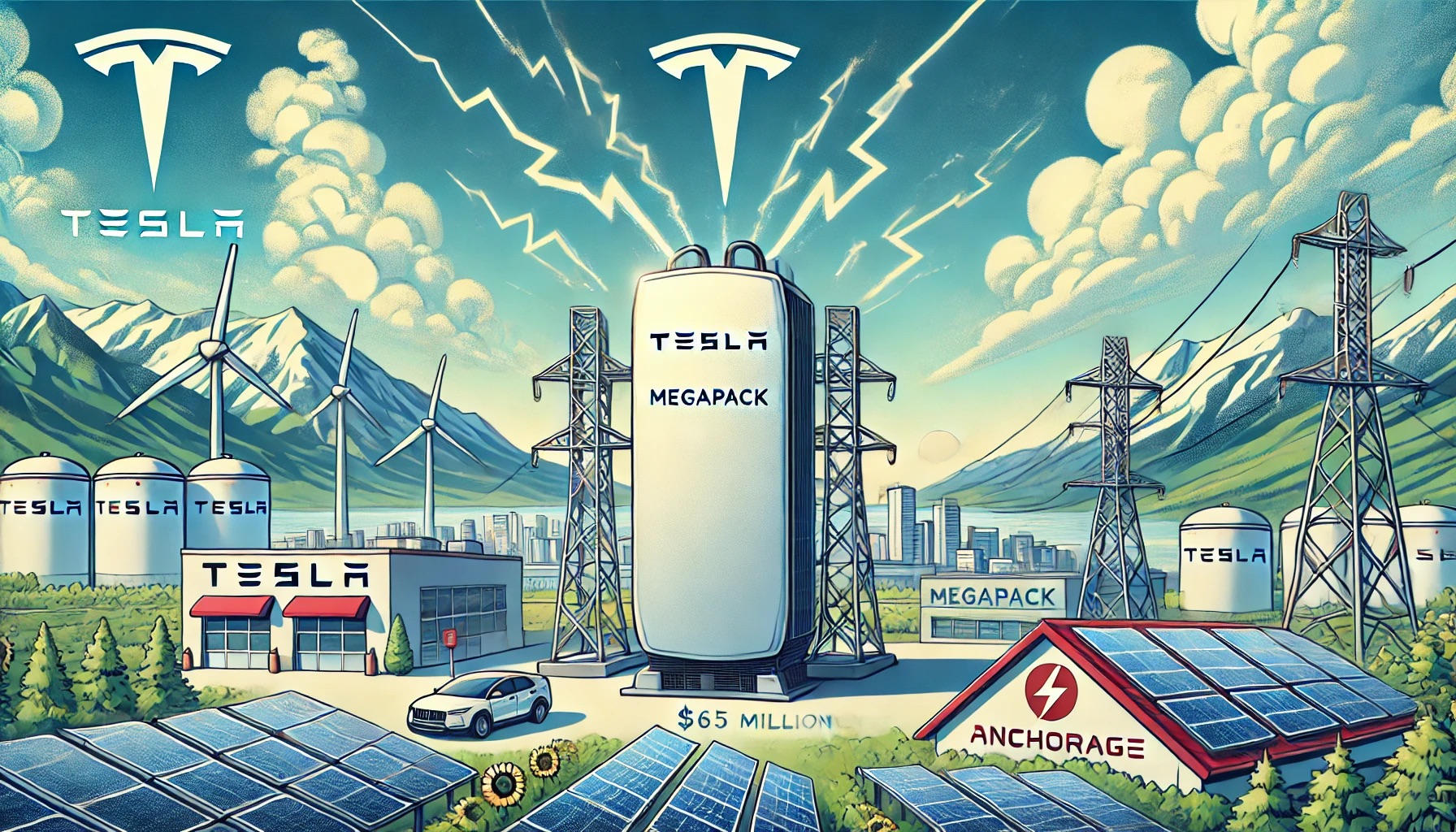Tesla has launched a $65 million Megapack energy storage system in Anchorage, Alaska. This grid-scale project, co-owned by Chugach Electric and Matanuska Electric Association, will provide 40MW/80MWh of battery power, enhancing energy reliability and reducing natural gas consumption by 5% annually.
Tesla's Megapack System in Alaska Set to Boost Power Reliability and Flexibility During Peak Demand
Another Tesla Megapack system was activated this week, marking the latest installment in the company's ongoing deployment of grid-scale batteries.
According to press releases issued by Chugach Electric and the Matanuska Electric Association (MEA) this week, Tesla and other entities have initiated a $65 million battery energy storage system (BESS) initiative in Anchorage, Alaska, which will feature 40MW/80MWh of Megapacks. The site is co-owned by the MEA and Chugach Electric, which own 75 and 25 percent of the initiative. It contains 24 of Tesla's two-hour Megapack units.
“The BESS enhances system flexibility, boosts reliability, saves fuel, and brings cutting-edge technology to the Railbelt,” wrote Arthur Miller, Chugach Electric CEO, in the release. “It’s a crucial step as we work to diversify power generation and create a more dynamic system.”
According to the providers (via Teslarati), the Megapack system is intended to serve as a secondary resource for Chugach Electric and the MEA during peak power and outages. Tesla's Megapacks will be capable of responding immediately to grid requirements when transmission line interruptions, insufficient power generation to meet demand, or other load shed events result in disruptions and other issues. The company's Autobidder AI will facilitate this response.
The utility administrators also assert that the site's footprint could accommodate a future expansion of up to 70 MW.
“We’re excited to see this project contribute to our region’s energy future,” said Tony Izzo, MEA CEO Tony Izzo. “We understand that reliability of power is the number one priority for our co-op members, and this initiative will improve power quality from the Bradley Lake Hydro project while reducing costs and increasing generation options for the entire region.”
Tesla's Megapack Deployment in Alaska Expected to Cut Natural Gas Use by 5% Annually
Similar to most BESS projects, the project is also anticipated to contribute to enhancing local grid stability and reducing the necessity for rotating reserves of hydro and natural gas generators. According to officials, the transition from the present generators to the BESS is anticipated to result in a 5% annual decrease in natural gas consumption for the MEA and Chugach.
Tesla has been supporting energy storage initiatives worldwide by deploying its Megapacks. In recent months, the company has announced and completed numerous new installations. The company has also been increasing the production of the Megapack at a "Megafactory" in Lathrop, California. It is presently finalizing a second Megafactory in Shanghai, China.
Tesla also provides a residential and commercial battery known as the Powerwall in addition to the grid-scale battery. In the first three quarters of the year, Tesla Energy deployed 20.3 GWh of battery storage products, surpassing the company's 14.7 GWh of deployments for 2023.



 Elon Musk Says X Will Open-Source Its Algorithm Amid EU Scrutiny
Elon Musk Says X Will Open-Source Its Algorithm Amid EU Scrutiny  Allegiant to Acquire Sun Country Airlines in $1.5 Billion Deal to Expand U.S. Leisure Travel Network
Allegiant to Acquire Sun Country Airlines in $1.5 Billion Deal to Expand U.S. Leisure Travel Network  Trump Pushes $100 Billion U.S. Oil Investment Plan for Venezuela After Maduro Seizure
Trump Pushes $100 Billion U.S. Oil Investment Plan for Venezuela After Maduro Seizure  Discord Confidentially Files for U.S. IPO, Signaling Major Milestone
Discord Confidentially Files for U.S. IPO, Signaling Major Milestone  Rio Tinto–Glencore Talks Spark Pressure on BHP as Copper Fuels Mining Mega Deals
Rio Tinto–Glencore Talks Spark Pressure on BHP as Copper Fuels Mining Mega Deals  TSMC Shares Hit Record High as Goldman Sachs Raises Price Target on AI Demand Outlook
TSMC Shares Hit Record High as Goldman Sachs Raises Price Target on AI Demand Outlook  Dell Revives XPS Laptop Lineup With New XPS 14 and XPS 16 to Boost Premium PC Demand
Dell Revives XPS Laptop Lineup With New XPS 14 and XPS 16 to Boost Premium PC Demand  SK Hynix Shares Hit Record High as AI Memory Demand Fuels Semiconductor Rally
SK Hynix Shares Hit Record High as AI Memory Demand Fuels Semiconductor Rally  AMD Unveils Next-Generation AI and PC Chips at CES, Highlights Major OpenAI Partnership
AMD Unveils Next-Generation AI and PC Chips at CES, Highlights Major OpenAI Partnership  Supreme Court to Hear Cisco Appeal on Alien Tort Statute and Human Rights Liability
Supreme Court to Hear Cisco Appeal on Alien Tort Statute and Human Rights Liability  China’s AI Sector Pushes to Close U.S. Tech Gap Amid Chipmaking Challenges
China’s AI Sector Pushes to Close U.S. Tech Gap Amid Chipmaking Challenges  Walmart to Join Nasdaq-100 Index as It Replaces AstraZeneca Following Exchange Move
Walmart to Join Nasdaq-100 Index as It Replaces AstraZeneca Following Exchange Move  Aktis Oncology Prices Upsized IPO at $18, Raising $318 Million in Major Biotech Debut
Aktis Oncology Prices Upsized IPO at $18, Raising $318 Million in Major Biotech Debut  UBS Upgrades L’Oréal to Buy, Sees Strong Sales Momentum and 20% Upside
UBS Upgrades L’Oréal to Buy, Sees Strong Sales Momentum and 20% Upside  Mercedes-Benz to Launch Advanced Urban Self-Driving System in the U.S., Challenging Tesla FSD
Mercedes-Benz to Launch Advanced Urban Self-Driving System in the U.S., Challenging Tesla FSD  Vitol to Ship First U.S. Naphtha Cargo to Venezuela Under New Oil Supply Deal
Vitol to Ship First U.S. Naphtha Cargo to Venezuela Under New Oil Supply Deal 































